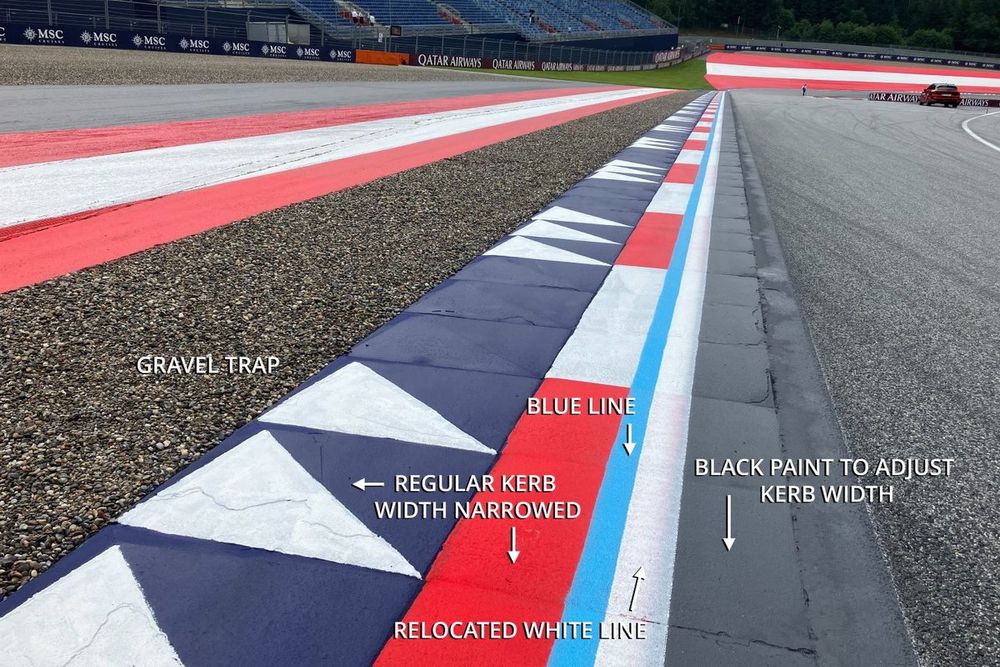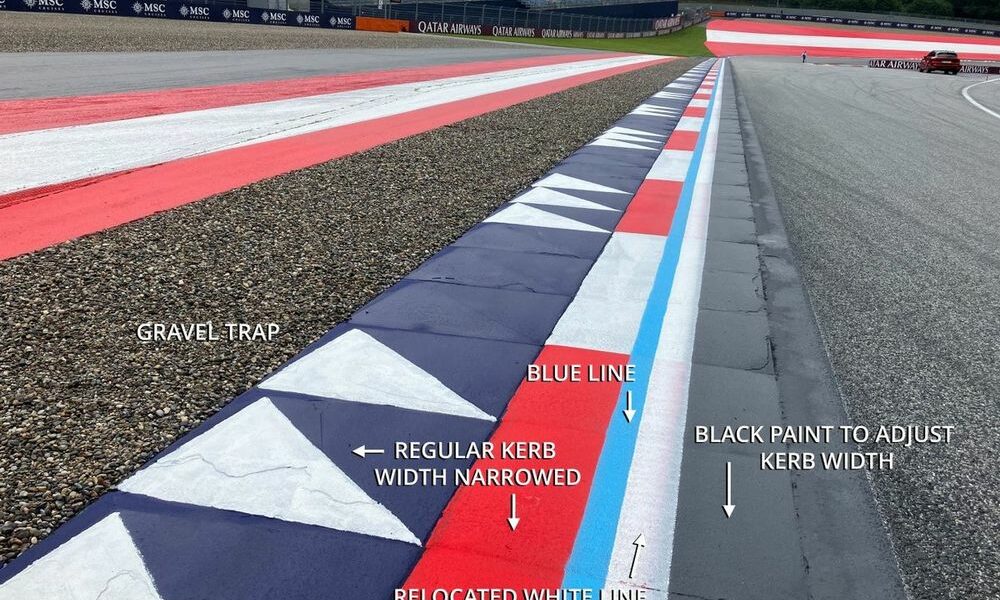A new kerb and gravel trap solution introduced at the Red Bull Ring could become the blueprint to banish track-limits problems everywhere in Formula 1.
As F1 teams got a first glimpse of the solution that has been incorporated at several corners of the Austrian Grand Prix venue on Thursday, F1 race director Niels Wittich has suggested the series has finally found a “perfect set-up”.
With the Red Bull Ring having been one of the circuits where track limits have been a major problem in the past, with there being more than 1200 offences in last year’s Austrian GP, it was clear action needed to be taken for this year.
So, following input from the FIA, a series of key revisions have been implemented in specific areas of the circuit aimed at resolving the matter for good.
And rather than it simply being a case of race organisers introducing gravel traps behind the kerbs to deter drivers from running wide, the changes are more detailed than that in an effort to sort the track-limits problem definitively.

Kerb detail
Photo by: Jon Noble
As the photograph above shows, the FIA has introduced a more holistic solution that is aimed at ensuring there is no way drivers can abuse track limits without running into the gravel.
Furthermore, the solution is one that makes it easy for the circuit to revise the kerbs for future motorbike events.
Critical to it is the FIA revising the width of the kerb through careful painting of the white lines that define the edge of the circuit and which drivers must stay inside.
To achieve this, the FIA has ensured that the kerb width in front of the gravel trap to the white line is exactly 1.5 metres wide – rather than the two metres that are standard at other F1 venues.
This is to ensure there is no way any cars will be able to go beyond the white line without actually being in the gravel trap.
An F1 car is two metres wide, while F2 (1.9m) and F3 (1.885m) are also too wide for the width of the kerb.
The narrowing of the kerb has been achieved through a relocation of the white line. This has been moved back higher up the kerb, with the area in front of it being painted black to blend in with the circuit itself.
Another key introduction to help the FIA’s policing of any drivers that do abuse track limits is the use of a blue line.
This has been introduced to provide a better visual reference for video analysis of cars running wide.
In the past, there had been times when there was no clear distinction between the white line at the end of the track and the white elements of kerbs.
Speaking ahead of the Austrian GP, Wittich said the solution was one he was very optimistic about.

Track detail with gravel traps
Photo by: Jon Noble
“It is what we think is the perfect set-up,” he said. “The drivers so far, the feedback we have had from them, has been positive.
“That’s because, in the end, it ends all discussions about if drivers gain time or don’t gain time. I’m positive that there will not be any track-limits problems.”
As well as this kerb solution being introduced for the final sequence of corners at the Red Bull Ring, similar changes have been made elsewhere on the track.
At Turns 4, 6 and 8, the white lines have been moved so the kerb is effectively 1.8 metres wide before the gravel trap, while at Turn 1 and Turn 3, the FIA has kept sausage kerbs on the exit just to help drivers get better guidance on when they are running wide.
Wittich said he hoped the solution adopted at the Red Bull Ring could be one that works at every venue on the calendar – and especially for those that also host bikes.
“We hope that in the close future, this is something that is good for bikes and for cars,” he said. “This will make it easy for the track to keep that set-up.”

